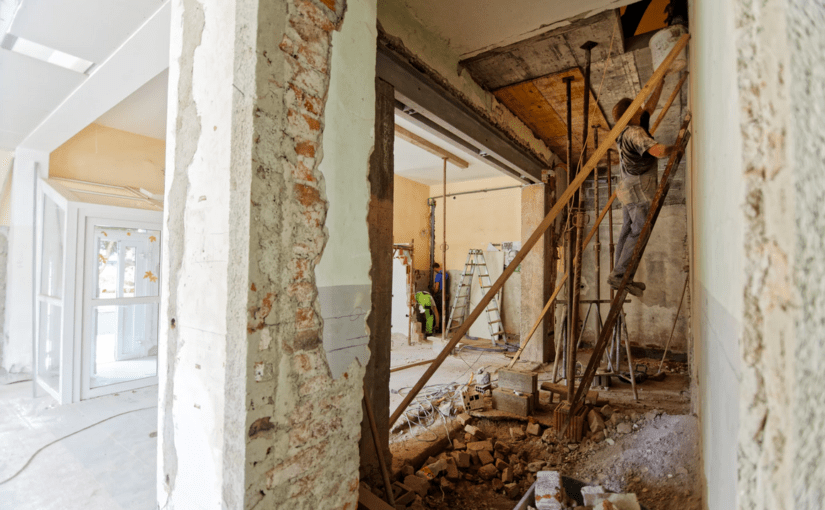
If you choose to live somewhere, that likely means you are drawn by both the home and the area. In order to keep the area beautiful, you need to know how to renovate responsibly: reduce your environmental impact when transforming your home.
Insulate and seal your home the smart way
The first thing you need to do in order to reduce your environmental impact when transforming your home is to insulate and seal your home. This is because one of the biggest contributors to wasting energy in a home is bad insulation. If your home is not properly insulated it takes a lot more power to keep it warm during winter or cold during summer. This also forces your appliances to work harder. So, even if you have a very energy efficient appliance, its rating means little if it has to work overtime to keep your home climate controlled. At the same time, insulation is not all you need to worry about. If your window or door frames are not sealed properly, a draft forms and has much the same effects. The good news is that a caulking gun can solve this, and it’s one of the best DIY projects.
Pay attention to the sort of materials you are using
Another way to reduce your environmental impact when transforming your home is to be careful with your selection of materials. This is because some building materials can be extremely harmful for the environment. Some are actively toxic for the environment, such as certain types of wood treatment and, in older homes, lead and asbestos. Of course, our understanding of building materials is constantly evolving, so there are few in use today that are as bad. But, even ‘minor’ materials that go into your home renovation, such as paint, affects your environment. There are paints you can purchase which have minimal negative effects. And which are much healthier to have in your home anyway! If you are doing a renovation on an old home, it is also smart to replace some of the materials used if they are like lead and asbestos examples we brought up already.
Consider adding solar panels to your home
One of the most beneficial ways of renovating responsibly is to add solar panels to your home. The addition of solar panels lets you alleviate some of the pressure on your local electric grid by producing your own electricity. In fact, if you live in an area with good enough weather conditions, it’s perfectly possible for you to start producing enough electricity to sell it back to your city! This, in turn, would not just ensure that you are doing a good thing for the environment by using a renewable source of power, but also help you earn some money on the side!
Pick your renovation’s timing carefully
It may sound silly, but picking the right time of year for your renovation is a way to reduce your environmental impact when transforming your home. The reason for this is simple: when renovating, it is frequently necessary to expose the interior of your home to the elements. Whether you are replacing windows, working on a wall, or just leave the windows open to let your home air out. This, in turn, brings us back to what we discussed about insulation: increased power consumption and less effective climate control. So, renovating when it’s warm but not too hot, like during spring or early summer, is the best choice.
Do not just get rid of all your old belongings
Throwing away your old furniture, or even some of your materials, goes against trying to be environmentally conscious. You can place most of your furniture into storage and then donate it. And, since there are green storage options, as the experts on the subject from Movers Not Shakers NYC point out, you’d be behaving responsible there too! Even some of the building materials you are removing from your home, such as pieces of wood, can be recycled or repurposed.
Do something with your garden
If you have a yard, then you should definitely consider adding a garden to it during renovation. A garden is pretty much the dream of everyone looking to have a sustainable home. You can grow your own food organically, and liven up your home with greenery. No matter how minor the impact of a single garden is on oxygen production, we can make a positive impact! So, don’t just look to transform your outdoor space into a modern oasis, but put it to practical use!
Be responsible with the waste your renovation produces
While a lot of what you remove from your home can be recycled, not all of it can. And you need to be responsible with the disposal of such waste. Plastic, bricks and debris dust can seriously hurt whatever area you dump them in. So, at the very least, make sure to take them to a designated area for such waste. This way, you can both enhance your home and protect the environment from the consequences of your actions.
Get energy efficient appliance replacements
The final way to reduce your environmental impact when transforming your home is to pick out energy efficient appliance replacements. Now, when you are shopping for appliances during a home renovation, your two main concerns are likely looks and cost. And while they look good, we will be upfront about this: high quality appliances with high levels of efficiency are often costly. But, the upfront cost of such appliances makes you forget something important. Energy efficient appliances use less power, which, in turn, means that your electricity bills will be lower. You may be paying more right then and there. But that doesn’t mean you won’t financially benefit from your decision in the long term!
For a beautiful home and beautiful nature both
With our guide on how to renovate responsibly: reduce your environmental impact when transforming your home, you’ll be able to both get yourself a beautiful place to live and preserve the beauty of nature in your area. So, try to follow as much of our advice as you can during your renovation project!














